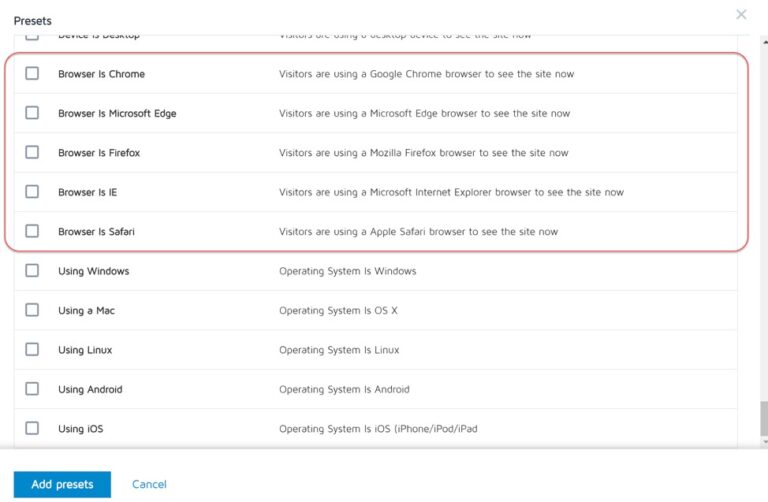
CDP solutions are increasingly being used to address and the new privacy landscape. As Andrea Rus, Head of GTM for SAP Customer Data Management, explains, these platforms can enable brands to “store all of a customer’s consent and preference data in his or her unified profile, making it easier to govern and orchestrate to other systems.”
Seeking to provide customers with convenience and inspiration at every interaction, leading retailers are increasingly blending physical and digital channels. Altogether, this means there are even more opportunities for brands to connect with customers at different touchpoints. At the same time, of course, this means an intensified danger that silos could create a disjointed customer experience.
This is the antithesis of many traditional marketing strategies which may focus on acquisition and sales. However, going beyond the purchase is the key to real loyalty, which means connecting with customers in a relevant way at all stages of their lifecycle – whether they are known but yet to buy, such as email newsletter subscribers, or are long and storied customers.
While many CDPs typically unify first, second, and third-party data, solutions, it’s clear where the current strategic focus lies for many brands. The benefits of first-party data are wide-ranging, but overall, it enables brands to build a better and deeper understanding of their customer segments, which can be used to inform more relevant and personalised experiences.
Taking ownership of the customer in a cookie-crumbling world
Overall, Shah confirms that “a tremendous amount of activity was happening with our customers, and how they interacted with their customers.”
Ratul Shah echoes this view, suggesting that loyalty arises from repeat positive experiences rather than products bought.
With the Covid-19 pandemic leading to greater digitisation in many industries, there are now more brand touchpoints than ever before, and consumer behaviour is increasingly fractured as a result.
CDPs can offer “a way for organisations to bring together disparate customer data into one place, to allow for the easy sharing of this information with other systems,” according to Econsultancy’s CDP Best Practice Guide.
This restructuring relies on a CDP integrated with other technology solutions such as a customer engagement platform, which helps to create a seamless and personalised experience regardless of channel. Platforms such as SAP Emarsys Customer Engagement turn customer data into real-time personalisation, which can include anything from product recommendations to customised campaigns and individual vouchers. In turn, the customer experience becomes seamless, consistent, and personalised across all touchpoints, helping to boost repeat purchases and overall revenue.
Altogether, it now seems an even more daunting task to unify datasets, create a single customer view and, in turn, deliver the personalised experiences that consumers have come to expect.
This technology is coming to the forefront due to its focus on first-party data – soon to be an even greater priority for marketers as Google prepares to block third-party cookies in Chrome at some point in 2023. Google is following in the footsteps of Apple, which confirmed “full third-party cookie blocking” in iOS, iPadOS and Safari in March 2020. Furthermore, Apple this year introduced ATT (app tracking transparency) in 2021, which requests user authorization to access app-related data for tracking the user or the device.
Keeping up with the omnichannel blend
At the same time, the digital advertising landscape is changing as third-party cookies are phased out by privacy-focused big tech, forcing marketers to reassess how they target consumers and track return on adspend.
While the Covid-19 pandemic has accelerated digitisation for a myriad of industries, the retail industry has made one of the most prominent shifts; ecommerce’s share in global retail increased from 14% in 2019 to 17% in 2020. CPG brands in particular are grappling with a shift to direct-to-consumer activity.
“Year-over-year, we have seen a 55% growth in identities created in our customer data solutions,” he says. “We saw an even bigger jump in the number of consent records created – a consent is that, when you create an account, when you opt into an email, you are giving permission to use that data… this grew at a 2 to 1 rate in terms of records managed. “
In Econsultancy’s CDP Best Practice Guide, Matthew Kelleher, Chief Commercial Officer at RedEye, highlights a theoretical example: “If I know a customer’s history – all of the channels that they have been on, what they said to the call centre, when they phoned in, etc, then that allows me to improve the customer experience by refining the relevance of the communications that I serve them,” he says. “So, for me, the benefit is personalisation, relevance and customer experience, which all lead to improved loyalty.”
Understanding customers to drive lifetime value
Finally, data privacy standards have been moved forward by the combination of regulation changes (such as GDPR and CCPA), policy changes from big tech (such as Google and Apple) and consumer mistrust in the wake of data breaches and misuse. This means marketers are looking closely at data collection and how they can forge relationships with customers based on the data at their disposal.
In other words, an SAP CDP can enable brands to reflect the consumer’s consent and privacy permissions in engagement and targeting across channels, as well as be centrally stored and therefore easily accessible if the consumer changes their mind.
“We can all point to our favourite brands that know us the best, that use the technologies in a seamless way… they understood who you were, they treated you with respect, they were able to show you complementary products and sizes and recommendations in any channel. That, to me, really speaks to a connected ecosystem.”
So, how are marketers investing in data management? Customer data platforms (CDPs) and engagements platforms are two increasingly essential parts of the tech stack.
In turn, with the knowledge that their data is being used for relevant and more meaningful interactions, trust can be increased – a vital factor for loyalty in today’s fractured retail landscape and beyond.
In a recent webinar, Ratul Shah, Head of Product Marketing for Customer Data solutions at SAP Customer Experience, explained how SAP has seen evidence of data and technology investment in the past 18 months.
Interestingly, research by Gartner suggests that the ‘omnichannel blend’ is not typically reflected in marketing organisational structures, with just 30% of B2C brands reporting that they have functional organisational alignment. Consequently, Gartner states that “brands hinging their future plans on ecommerce – and structuring teams accordingly – should think twice.” Instead, Gartner explains, “brands should take advantage of this time to reorient teams and objectives around a customer-first, channel-agnostic strategy.”
Supporting customer data security
Speaking during SAP’s webinar, Maria Morais, Global Industry Principal for SAP Customer Experience, also suggests that retail brands need to think of loyalty as more than just discounted products – particularly considering the overstock issues that many retailers ran into during the pandemic.
As the volume of customer data created increases, data management solutions can enable marketers to not only consolidate this data, but to activate it in order to create experiences that drive and foster loyalty. This loyalty doesn’t only come through basic personalisation of course (such as name or reference of a past purchase), but may include tailored communications based on a contextual and real-time view of the customer.
“There is more traffic online, so customer acquisition should be easier…” she says, “but it’s actually not because suddenly there is so much going on that it was never as important as it is now to have a customer journey that engages beyond transaction.”
Of course, investing in a CDP is no silver bullet – brands need to have a data strategy in place to start with. However, first-party data collection and the use of a CDP certainly chimes with many business’ avowed pursuit of customer experiences good enough to build brand loyalty.






